On arrival, after clearing immigrations, you will be met by our representative and escorted to our hotel.
Delhi, the capital and the third largest city of India, is a fusion of ancient and modern. Standing at the western end of the Gangetic Plain, it is a vibrant city rich in culture, architecture, beautiful gardens and human diversity. Its rich history is reflected in magnificent monuments, in museums and in galleries. It comprises two contrasting yet harmonious parts, Old Delhi and New Delhi. Old Delhi was the capital of Muslim India from the 12th to the 19th centuries, while New Delhi was created by the British Raj and replaced Calcutta (Kolkata) as the capital in 1931. It is India’s main international gateway, and the travel hub of Northern India.
Check in the hotel and spend rest of the evening at leisure



Full day city tour of Old and New Delhi.
The sightseeing of Old Delhi includes Jama Masjid, Chandni Chowk, Red Fort and Raj Ghat.
Jama Masjid: This great mosque is the largest in India, built by Shah Jahan between 1644 and 1658. With a courtyard capable of holding 25,000 devotees, the highly decorative mosque has three great gates, four towers and two 40 metre high minarets constructed of alternating strips of red sandstone and white marble.
Chandni Chowk: Chandni Chowk, the bustling oriental bazaar, is next to the Red Fort and Jama Masjid. It was built in 1650 by Shah Jahan's favourite daughter, Jahanara Begum, as a complement to the imperial habitat, the Red Fort.
Drive Past Red Fort: The red sandstone walls of the massive Red Fort (Lal Qila) stretch some two kilometres and rise to 33 metres above the clamour of Old Delhi. It was a fort and royal residence, and a striking reminder of the magnificent power of the Mughal emperors (Closed on Mondays).
Raj Ghat: Set in a lovely garden, a black marble platform on the banks of the Yamuna River marks the place where “the father” of the Nation, Mohandas Karamchand Gandhi (popularly known as Mahatma Gandhi) was cremated after being assassinated in 1948.
Later start for the sightseeing of New Delhi includes the Qutab Minar, Humayun’s Tomb, India Gate and a drive past various Government buildings including Parliament House and Rashtrapati Bhawan
Qutab Minar: An excellent example of Afghan architecture, the Qutab Minar is a soaring, 73 metre high tower of victory. Started in 1193 by Qutab-uddin Aibak, immediately after the defeat of Delhi's last Hindu kingdom, it was completed by his successors. Gracefully hand-carved for its entire height, it has five distinct storeys, each marked by a projecting balcony and tapers from a 15-metre diameter at the base to just 2.5 metres at the top. The lower three storeys are red sandstone, while the upper two are of marble and sandstone.
Humayun’s Tomb: Built in 1565 A.D. nine years after the death of Humayun, by his senior widow Bega Begam. Refined over the years, this striking and
beautiful tomb’s design evolved into the Taj Mahal. Notable features are the centrally located well-proportioned mausoleum topped by double dome and the garden squares (chaharbagh) with their pathways water channels.
India Gate: At the eastern end of the Raj Path in New Delhi stands the 42 metre high India Gate. An "arch of triumph" it commemorates and bears the names of the 90,000 Indian soldiers who lost their lives during the World War I and North West Frontier (Afghan) campaigns.
Conclude your evening with visit to Dilli Haat.
The Dilli Haat provides the ambiance of a traditional rural Haat or village market, but one suited for more contemporary needs. This Food and Craft Bazaar is a treasure house of Indian culture, handicrafts and ethnic cuisine, A unique bazaar, in the heart of the city, it displays the richness of Indian culture on a permanent basis.

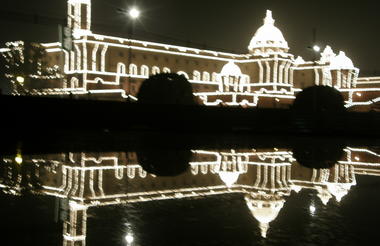
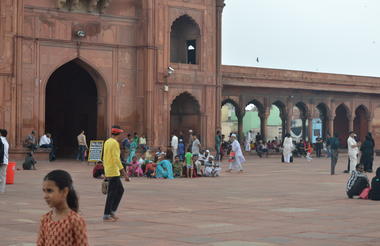
Following your breakfast, check out from your hotel and drive to Agra.
Agra was the capital of the Afghan King Sikandar Lodhi’s empire from 1501. It passed to the Mughals soon after and in 1526 Emperor Babar transformed Agra, giving it a unique character and beauty. A great patron of the arts, he made changes to the culture and life-style of his people, which in turn brought forth some of the finest craftsmen, artists, statesmen, warriors and nobility ever seen in this part of India.
Over the next few centuries Agra witnessed a rise in pomp and pageantry under the rule of three great Mughal monarchs - Emperors Akbar, Jehangir and Shah Jahan. All lavished their love and riches on this fabled city, making it one of the great centres of art, culture, learning and commerce.
Arrive Agra, check in at the hotel.
Later proceed for Half Day Agra City Tour which includes a visit to Agra Fort, Itimad-Ud-Daulah and Sunset visit to the Taj Mahal.
Itimad-Ud-Daulah This is the first example of Mughal architecture using marble. It was built by Empress Nur Jahan, in memory of her father Ghias-Ud-Din Beg, between 1622 and 28.
She was the daughter-in-law of Emperor Akbar, and he the grandfather of Mumtaz Mahal. A graceful building much smaller than the Taj Mahal is also the first example in Mughal architecture of a building faced entirely in marble. The in-lay work is exquisite.
Agra Fort was built principally as military establishments by Akbar in 1565. However, it was partially converted into a palace during Shah Jahan’s reign. Though Akbar built the original structure, his grandsons made many additions. This powerful fortress encompasses the imperial city of the Mughal rulers within its 2.5 kilometre enclosure walls.
Taj Mahal was built by Shah Jahan between 1631 to 1653 in memory of his queen Mumtaz Mahal to enshrine her mortal remains. This architectural marvel is a perfectly proportioned masterpiece fashioned from white marble and in-laid with precious and semi-precious stones. It stands testimony to the skill of some 20,000 craftsmen brought together from Persia, Turkey, France and Italy, and who laboured for 22 years to complete this ‘Love Poem in Marble'. (Closed on Fridays).
Overnight in Agra
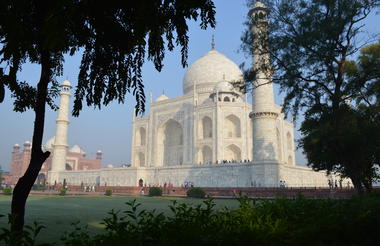
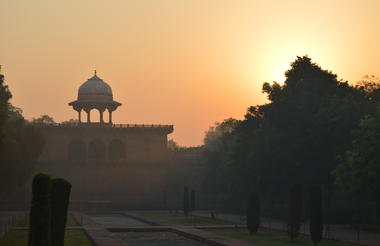
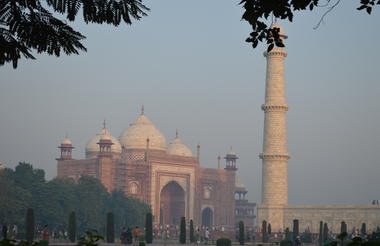
After breakfast, check out and drive to Bharatpur: enroute visit Fatehpur Sikri.
Fatehpur Sikri: Located 40 kms from Agra, it was built by Emperor Akbar in 1569, in honour of the great Saint Sheikh Salim Chisti, who blessed Akbar and prophesised the birth of a son, who later became Emperor Jehangir. It is in a superb and complete state of preservation, and within the walls are palaces and the Jama Masjid. The main entrance is the 54 metre high Buland Darwaza, the Gate of Victory.
Later board your train to Ranthambhore (Sawai Madhopur).
Sector Train Details Departure Arrival Class
Bharatpur / Ranthambhore 12904-GOLDN TEMPLE MAIL 1030 hrs 1255 hrs 2nd AC Class
Upon arrival in Ranthambhore, you will be met by our representative & transferred to your hotel.
Ranthambore National Park encompasses nearly 400 sq km of dry deciduous forest. The park’s name derives from the fortress of Ranthambhore (built in 944 AD), which sits on a rocky outcrop in the forest.
The forests around the fort were once the private hunting grounds of the Maharajas of Jaipur. In 1957 Ranthambhore was declared a wildlife sanctuary. Today it has some of the finest habitats in the world and is rich with diverse flora and fauna.
Lunch & dinner at the lodge.
Afternoon game drive by exclusive gypsy.
Overnight in Ranthambhore
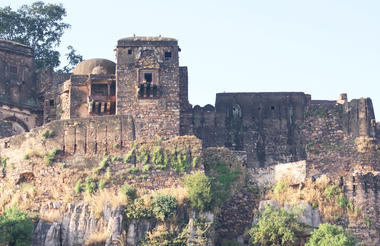
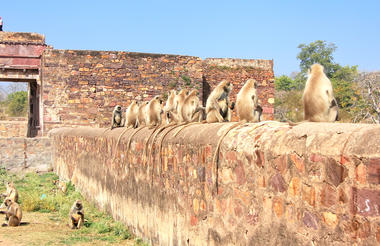
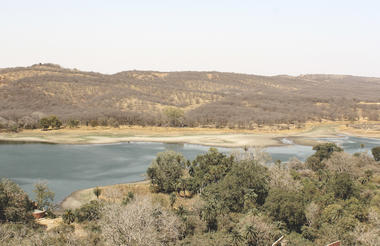
Morning & afternoon game drives by exclusive jeeps (known locally as a gypsy).
The park’s mammal list includes tiger, sambar, cheetal, nilgai, wild boar, chinkara, langoor, leopard, sloth bear, hyena and jackal. There are many species of reptiles and amphibians including python, cobra and other snakes, fresh water crocodile, monitor lizard and tortoises. Walking is prohibited inside the park.
Breakfast, lunch & dinner at the lodge.
Overnight in Ranthambhore
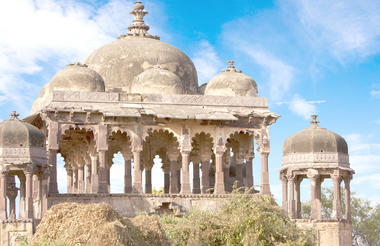
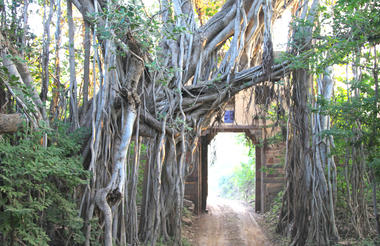
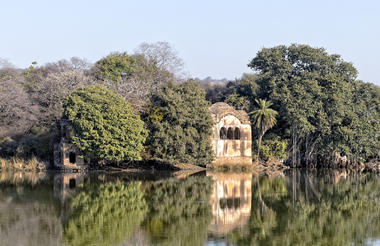
Post breakfast & lunch, check out and drive to Jaipur.
Jaipur is the state capital of Rajasthan and owes its name, planning and foundation to the Maharaja Jai Singh II. In 1727 he decided to move from his hillside fortress at Amber to the plains, and thus Jaipur was conceived. It is also known as the "Pink City", derived from the pink painted sandstone from which the buildings in the old walled city are constructed. The city is endowed with great architectural elegance and beauty, with magnificent historic palaces, temples, gardens, museums and an amazing observatory built by Jai Singh.
Arrive Jaipur, check in the hotel and spend the rest of day at leisure.
Overnight in Jaipur
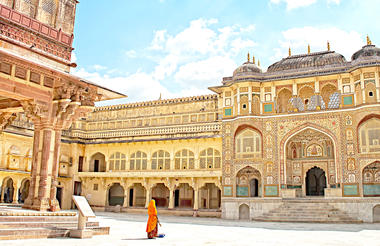


Breakfast at the hotel.
Full day sightseeing of Jaipur.
Morning, sightseeing of Amber Fort with elephant ride: Seven miles outside the city, in the rugged hills that surround Jaipur, is the magnificent Amber Fort. An elephant will take you up the steep road to the fort, passing through huge gateways and pillared pavilions. This Rajput Fortress/Palace was constructed from 1592 by Raja Man Singh II, and is a superb example of Rajput architecture. Within the Fort is Jai Mandir (Sheesh Mahal - Palace of Mirrors), renowned for its architectural designs using mirrors of varied shapes and sizes in the intricate design of its wall decoration.
Anokhi Museum: In the Amer Fort’s shadow and a mere ten minute walk through the cobbled streets of Amber, lies the Anokhi Museum of Hand Printing (AMHP). Located in a magnificently restored haveli or mansion, the museum displays a varied selection of block printed textiles alongside images, tools and related objects – all chosen to provide an in-depth look into the complexity of this ancient tradition.
Afternoon, sightseeing of Jaipur City: A city tour takes you through the bazaars to the Maharaja's City Palace. Part of it is now a fine museum with a comprehensive display of historic artefacts. A relatively small portion of the palace is still used by the Royal family of Jaipur.
Built in the style of a fortified campus, one of the palaces is the Hawa Mahal, known as the Palace of the Winds. Built in 1799 this five -story building looks out over the main street, and was originally for the ladies of the royal household to be able to watch life outside the cloistered Royal Residence.
Nearby is the Jantar Mantar, which has the largest stone and marble crafted observatory in the world. Built by Jai Singh in 1728, it is still equipped with the its original ancient instruments including a very accurate 90-foot sundial. Many of them are still in working condition.
Overnight in Jaipur


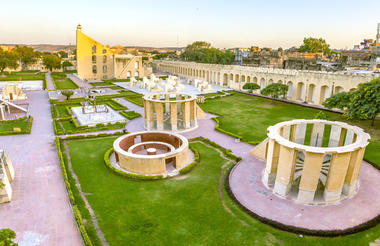
After an early breakfast, check out and drive to Jodhpur.
Rao Jodha, the chief of the Rajput clan called the Rathores, founded the bustling desert city of Jodhpur in 1459. It became the centre of the Rathore Kingdom known as Marwar, and lies in the heart of Rajasthan and on the edge of the Thar Desert. The massive fort dominates the city, topping a rocky hill that rises in its centre. The old city is surrounded by a 10 km wall, from which eight gates give entry and exit.
Arrive Jodhpur, check in at the hotel and spend rest of the day at leisure.
Overnight in Jodhpur
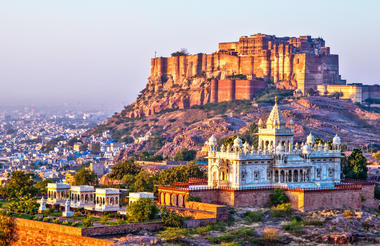
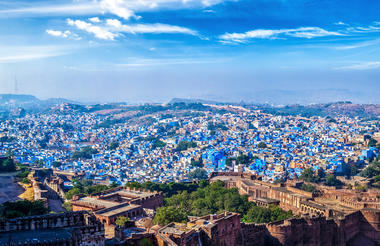
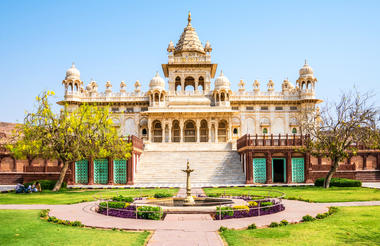
Breakfast at your hotel
Later proceed for afternoon city tour of Jodhpur.
Mehrangarh Fort: Perched on a 125 m high hill the fort was founded in 1459. It is both impressive and formidable in both its location and construction. On the ramparts is a rare collection of canon, and battle scars from canon ball hits can still be seen on one of the gates. Within the fort are magnificent palaces, with meticulously carved panels and latticed windows or "Jarokhas". The chambers have evocative names - Moti Mahal, Phool Mahal, Sheesh Mahal, the Sileh Khana and the Daulat Khana reflect the splendour of a bygone era
.Jaswant Thada: This graceful white marble cenotaph is the memorial to Maharaja Jaswant Singh II, and was built in 1899. The main memorial is built like a temple, with intricately carved marble. Located in stark and rocky terrain it has a secluded and a mystic aura
Jeep Safari Visit to a Bishnoi Village The Bishnoi (followers of Guru Jamboji of the 15th Century and his 29 principles) have protected nature for more than 500 years, and are arguably some of the worlds "Premier ecologists". Bishnoi's are strong lovers of trees and animals and are responsible for the survival of species like the Black Buck Antelope (a protected species) . They share a close and special relationship with this endangered animal, wherein the antelope stays close to Bishnoi habitation, never leaving it, and displays complete trust in the Bishnoi people.
Overnight in Jodhpur
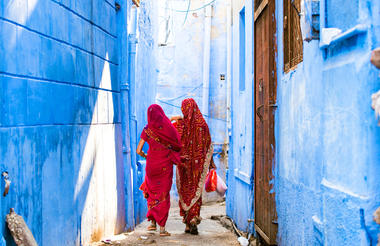
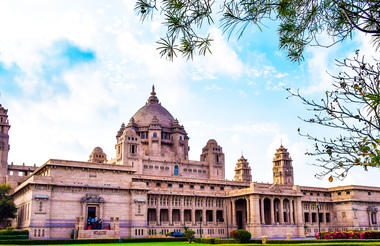
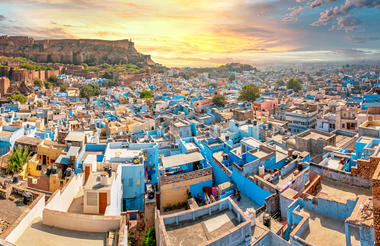
Post breakfast, check out and drive to Udaipur.
Enroute visit Ranakpur Temples (Audio Guide).
The Jain Temple complex at Ranakpur is one of India’s hidden gems. Built in the 15th century the temples are situated in the lovely Aravali valley, and the town is named after Rana Khumba, a legendary warrior-king of Udaipur. The beautiful architecture and exquisite stone carving single these temples out. The main temple has 39 chambers with 1,444 carved stone pillars supporting the roof, and no two are alike. Complimenting this the ceilings are a wonder to behold.
Later continue your drive to Udaipur.
Udaipur, the 'City of Dreams' also known as the Venice of the East, is interspersed with shimmering lakes, marble palaces and fountains. It is often referred to as the most romantic city in India. It was built in traditional Rajput tyle in 1559 A.D. by Maharana Udai Singh and was originally the capital of the State of Mewar. Its beautiful lake setting; graceful architecture, bustling bazaars and historical past make Udaipur rather special.
Check in at the hotel and spend rest of the day at leisure.
Overnight in Udaipur
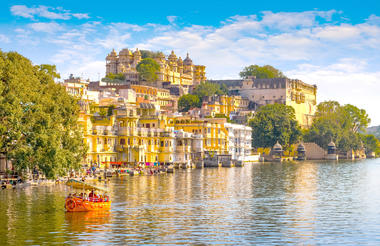
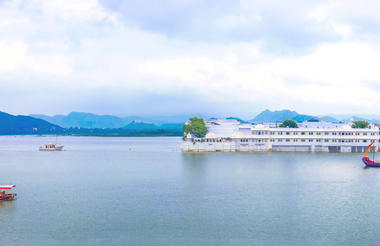
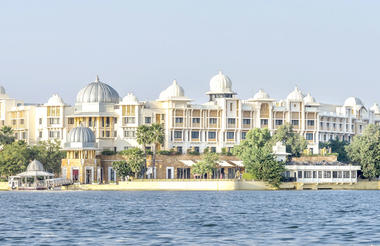
Breakfast at your hotel.
Morning city tour includes the City Palace & Museum, Jagdish Temple and the Sahelion ki Bari (Garden of the Maids of Honour).
The grand City Palace towers over the Pichola Lake. Maharana Uday Singh initiated its construction and succeeding Maharanas added several palaces to the complex but retained a surprising uniformity to the design. The main part of the palace is now a museum displaying a large and diverse array of artefacts, the Crystal Gallery having a breath-taking collection of crystal.
Jagdish Temple: The exterior and the plinth are covered with superb base reliefs of alligators, elephants, horsemen and celestial musicians rising in tiers. Chanting, bells and music can be heard throughout the day.
Sahelion Ki Bari: Known as the Gardens of the Maids of Honour, and built in the 18th century by Maharana Sangram Singh, these delightful gardens are discreet and in impeccable taste. The fountains of the Sahelion ki Bari function solely by water pressure with no pumps being used. In the evening, enjoy an exclusive boat ride at Lake Pichola
An evening boat ride on Lake Pichola cruises the city waterfront, bathing Ghats, and out to Jag Mandir. Lake Pichola derives its name from Pichola Village, which was submerged when Maharana Udai Singh enlarged the lake after he founded the city.
Overnight in Udaipur
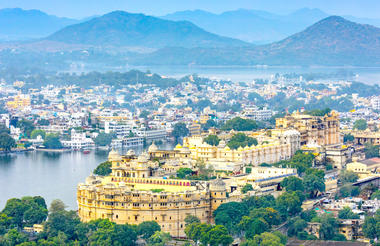
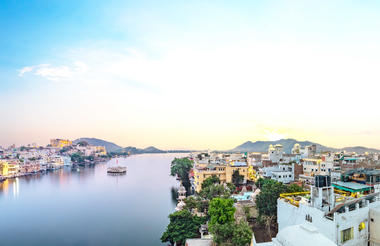
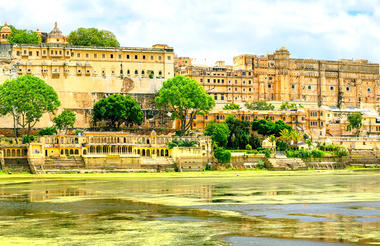
Following your breakfast, check out and you will be transferred to the airport for your flight to Mumbai.
Sector Flight Details Departure Arrival Class
Udaipur / Mumbai Indigo / 6E-748 0940 Hrs 1135 Hrs Economy
On arrival, you will be met by our representative & transferred to your hotel in Mumbai.
Mumbai (formerly Bombay), the gateway to India in the days of the British Raj, is today India's commercial capital. The city dates back to around the first century AD, when the area consisted of seven islands separated by the sea. In 1661 the Portuguese presented the port and islands of Bombay to the British, and in 1668 the East India Company leased all of the islands from the British Government for £10.00 in gold per year. On independence in 1947 the Bombay presidency became Bombay state, and subsequently Bombay became the state capital of Maharashtra. Today Mumbai is a fascinating crossroads of the east and west where the sophistication and technology of the first world is combined with the eastern ability to sell almost anything against a backdrop of oriental colour and scent. Besides being the major port, Mumbai is the most cosmopolitan, fastest moving, affluent and industrialized city in India. It is India's financial, commercial and industrial centre, and the centre of the film industry (Bollywood).
Check in the hotel.
Remainder of the day at leisure
Overnight Mumbai
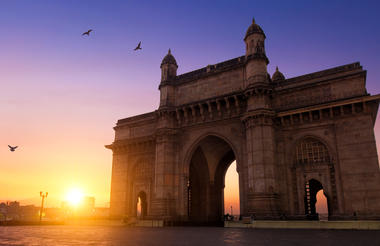
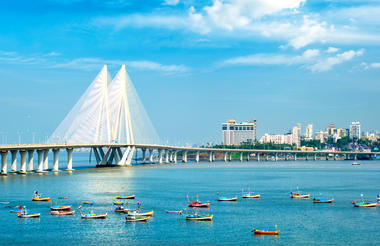
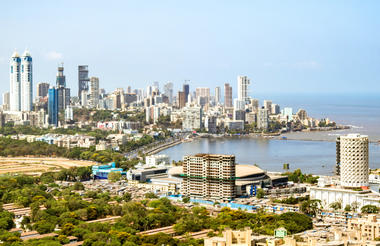
Breakfast at your hotel.
Morning sightseeing visit to Gateway of India and Elephanta Island.
The Gateway of India, Mumbai's most striking monument, is an imposing arch in the Indo-Saracenic style with Gujarati and Islamic elements. It was built to commemorate the visit of King George V and Queen Mary to India in 1911.
Near the Gateway is a statue of Shivaji, the 17th century founder of the independent Hindu Kingdom of Maharashtra.
An hour's boat-ride, 10 kms across the Arabian Sea from Gateway, is the small but celebrated island of Elephanta, famous for its Elephanta Cave Temples. Carved into the island’s solid stone, the base relief carvings are magnificent. The Portuguese renamed this island Elephanta after a large stone elephant found near the shore.
Afternoon sightseeing of the city, visiting the Prince of Wales Museum, Mani Bhawan, Dhobi Ghat, Crawford Market and drive along Marine Drive.
Princes of Wales Museum: Chhatrapati Shivaji Maharaj Museum was built to commemorate the visit of the King George V’s first visit to India in 1905 when he was still the Prince of Wales, and it opened in 1914. With sections on art, archaeology and natural history, it houses rare and ancient exhibits of India’s history as well as objects from foreign lands.
Mani Bhawan: This is where Mahatma Gandhi stayed when he visited Mumbai between 1917 and 1934. He preached Ahimsa or non-violence, and it was here that his association with the charkha or spinning wheel began in 1917. It now houses a picture gallery, a 20,000-volume research library and a film and recording archive
Dhobi Ghat: A unique feature of Mumbai, the dhobi is a traditional laundryman, who will collect your dirty linen, wash it, and return it neatly pressed to your doorstep. At Dhobi Ghat the clothes are soaked in lather water, then thrashed on the stones, later thrown into huge vats of boiling starch and then hung out to dry.
Marine Drive: also known as the "Queen's Necklace" is a pleasant drive along the shoreline of Back Bay, from Nariman Point past Chowpatty and up to Malabar Hill.
Following your excursion, return to hotel and spend remainder of the day at leisure.
Overnight in Mumbai
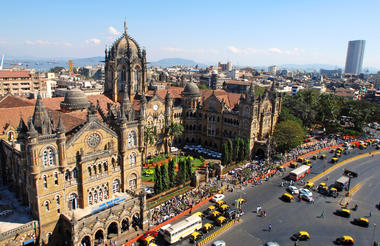
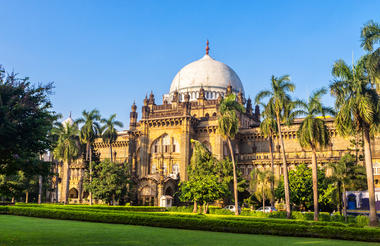
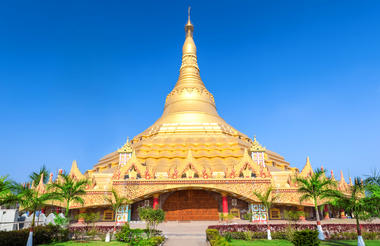
After breakfast, you will check from your hotel and be transferred to the International airport for your flight back home. SQ-421 departs at 1145 hrs







